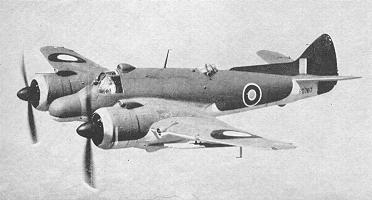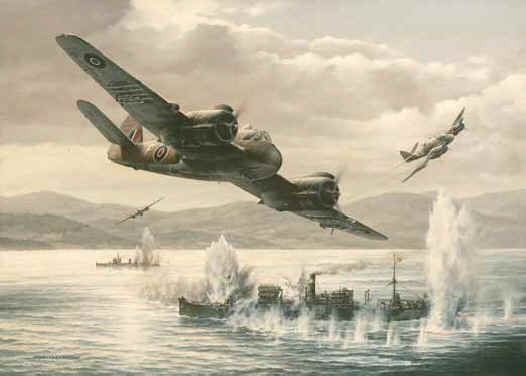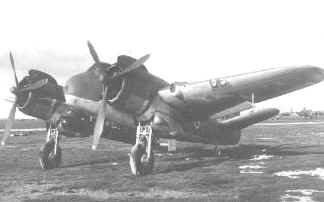 |
|
|||
|
|
||||
| Bristol Beaufighter; the "forgotten" fighter of WW2 |
|
|
 |
To the Japanese, the Beaufighter became known as "The Whispering Death" which gives some idea of the speed at which one could suddenly appear, strike and turn for home. Beaufighters were also flown by the air forces of Britain, Australia, Canada, New Zealand and, in small numbers, the US. |
|
Britain's lack of long-range heavy fighters when the war started was a source of acute embarrassment to the RAF single-engined interceptors such as the Hurricane and Spitfire lacked the endurance for effective standing patrols, and it was soon discovered that the heavy long-range fighter would be invaluable to perform a wide variety of tasks. The result was a piece of true British improvisation--the Bristol Beaufighter, which entered service a year after the outbreak of war, at a time when it was most sorely needed.
|
| Bristol Beaufighter T.F.X | |
|---|---|
| Dimensions: | |
| Wing span: | 57 ft. 10 in. (17.64 m) |
| Length: | 41 ft. 4 in. (12.59 m) |
| Height: | 15 ft. 10 in. (4.84 m) |
| Weights: | |
| Empty: | 15,592 lb (7,072 kg) |
| Maximum: | 25,400 lb. (11,521 kg) |
| Disposable Load: | 9,808 lb. (4,448 kg) |
| Performance: | |
| Maximum Speed: | 305 m.p.h. (490
km/h) @ sea-level. 320 m.p.h. (514 km/h) @ 10,000 ft. (3,048 m) |
| Service Ceiling: | 19,000 ft. (5,791 m) (without torpedo) |
| Range: | 1,400 miles (2,253 km) with torpedo and
normal fuel. 1,750 miles (2,816 km) with torpedo and long-range tanks. |
| Powerplant: | |
| Two Bristol Hercules
XVII fourteen-cylinder two-row sleeve-valve radial engines rated at
1,725 h.p. (1,286 kw) @ 2,900 r.p.m. for take-off and 1,395 h.p. (1,040 kw) @ 2,400 r.p.m. at 1,500 ft. (457 m). |
|
| Armament: | |
| Four 20-mm. Hispano cannon in the fuselage nose and six 0.303-in. machine-guns in the wings and one 0.303-in. Vickers "K" or Browning gun in the dorsal position. One 18-in. torpedo externally under fuselage. Eight rocket projectiles could be carried as alternative to the wing guns. | |


